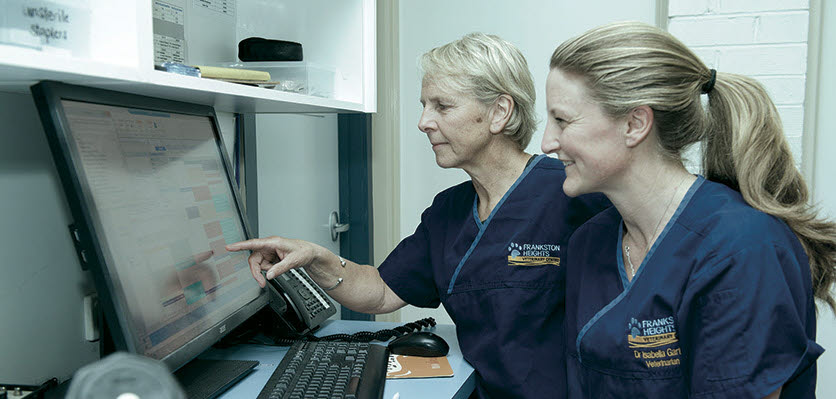
Janet Murray continues her look at what the future holds for vet nursing.
In the last issue, we looked at data from the UK which showed how improving the ratio of vet nurses to vets can lead to increased revenue. This was a clear theme at the recent 2019 AVA Annual conference in Perth, with overseas speakers Gudrun Ravetz (UK), Cindy Adams (Canada) and Alison Lambert (UK) all extolling the benefits of practices fully utilising the skills of their nursing teams.
Another potential avenue for utilising vet nurses is in dedicated veterinary nursing clinics, although this does require an initial investment of time and effort to ensure the buy-in of the whole team, and the establishment of supportive practice processes.
The entry-level Australian nursing qualification, Certificate IV in Veterinary Nursing, gives graduates the ability to provide informed details to clients. Nurses are qualified to discuss nutrition, general health, and outline many aspects of caring for animals. So, it should go without saying that nurses have the skills to provide excellent support to vets in initial and post-procedure consults.
In fact, given the current shortage of vets in Australia, smarter nurse utilisation can only be a positive (and necessary) step.
In the UK, nurse clinics have for some time played an important role in delivering routine care and ensuring all-round animal wellbeing. While they are certainly on the increase in Australia, nursing clinics are still widely underutilised or not formatted correctly in order to free up the maximum amount of vet time.
A 2016 project by the British Veterinary Nursing Association (BVNA) and Royal College of Veterinary Surgeons (RCVS) consulted with vet nurses across the UK regarding the future of veterinary nursing. One specific recommendation came through loud and clear: the need to maximise the potential of nurses by incorporating existing skills and charging appropriately for their professional time.
Nurse clinics should offer transparent charging, with fixed prices communicated for procedures such as nail-clipping, dressing and bandage changes, administering prescribed medications and carrying out detailed weight, rehabilitation or pre-vaccination work.
By involving the entire practice team, and with careful planning and execution early on, nursing clinics will come to play a pivotal role. Developing a consistent model for structured consults (such as the Onswitch 7 Steps model) will be key, helping ensure clarity of message so that pets receive the best care, alongside building trust between nurse and client. Working together, vets and nurses can offer a wider range of services to clients, boosting both recommendation rates and practice turnover along the way.
In the next edition, we will look at ways to build positive public perceptions of the veterinary nurse.
Source:
1. VN Futures Action Group (2016). VN Futures report. Accessed June 2019
https://www.vetfutures.org.uk/resource/vn-futures-report-and-action-plan
This article originally appeared in the August 2019 Australian Veterinary Journal.
